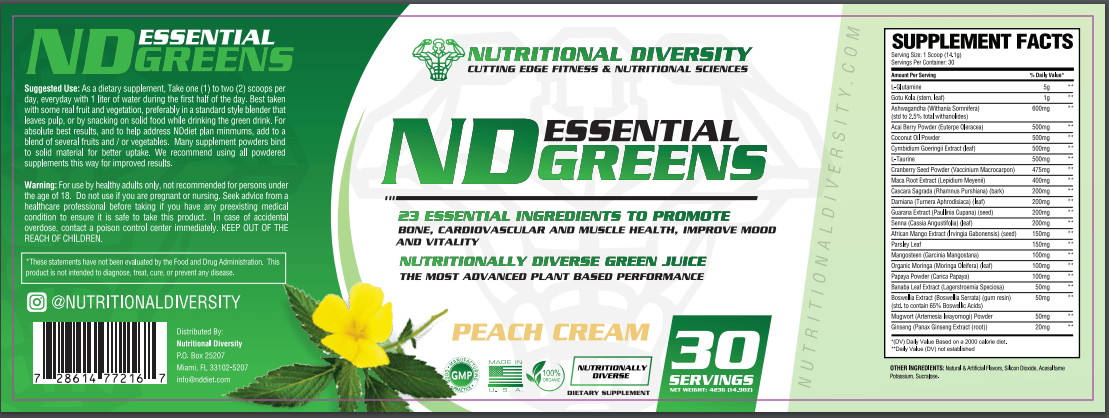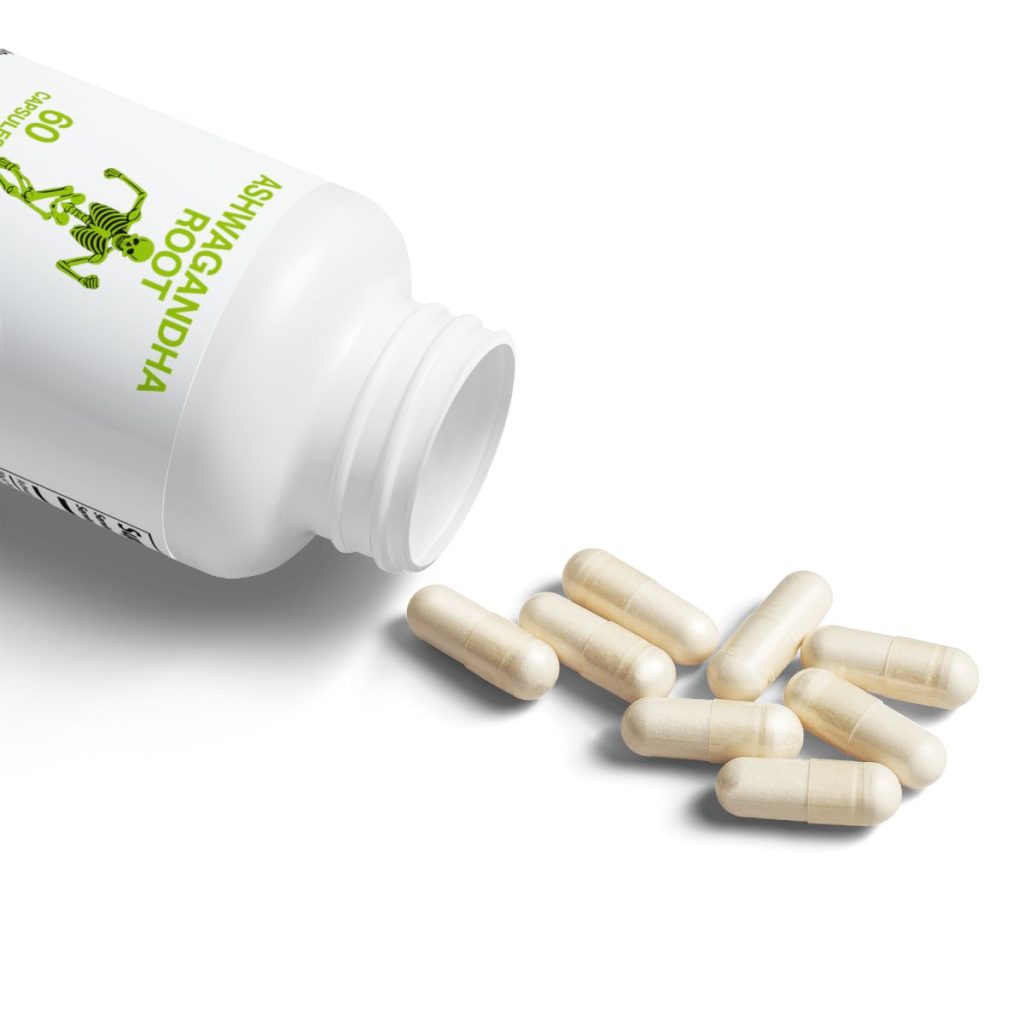Special Elements
Best Green Juice, Rankings, Benefits, Side Effects & Experience
Right off the bat, with U.S. clients I am normally recommending 3 different of the best green juice products. Health is #1 and in the modern diet culture that lacks so heavily the full spread of nutrition we evolved with and need to perform optimally; a good array of green juice is the next best thing.
Of course, my principal recommendation is always to get to permaculture and get the stuff fresh.
The best green juice is fresh green juice and here in Panama, we make our green juices with 12 to 23 species each time,
When it comes to green juice I am looking for ingredients that are not common monoculture crops we can find in the grocery store. I am looking for top-quality sourcing of ingredients, and a high diversity of them.
looking for top-quality sourcing of ingredients, and a high diversity of them.
There are thousands of products out there claiming to be the real stuff. Here in this piece, the pro’s who work with plants and high-end nutrition every day, break down the pros and cons of several green juice products available currently.
There are steep benefits that can be experienced from green juice consumption.
The side effects and things to watch out for are mostly covered at harvest and certain complex reactions are known or unknown to the Nutritional Diversity diet while consuming a high variety of foods are usually quite manageable by simply going slow with new nutritional line-ups.
The power and energy that comes from eating the freshly harvested leaves in this highly diverse fashion are remarkable. {x}
Throughout time, herbalists and other health practitioners have grated and ground herbs and squeezed soft fruits into elixirs of vitality.
Dr. Max Gerson (October 18, 1881 – March 8, 1959) was the first to spearhead the concept that a diverse, all-natural vegetable diet could be used to fight cancer and other chronic diseases in the early part of the 1900s. {x}
It was later in the 1930s, when author and raw food proponent Dr. Norman Walker invented the first juicing machine, that juicing became widely available.
But the mention of smashing pomegranates and figs goes back to the Dead Sea Scrolls (150BC), where they were able to extract subtle form and “extreme strength.”
Today the Cancer Association stands that Gerson therapy or an all-natural vegetable diet is not approved for use in treating cancer and other ailments and that the 13 glasses of fruit and vegetable use have no recorded benefit. {x}
Green juices can be an excellent all-natural solution for the city dweller, who has much more limited access to species than the farmer does.
We always say that a small balcony or window garden with culantro and your own garlic for example, or knowing one small farmer is enough to make sure you have something fresh to mix in. This helps by allowing the powders to bind to larger pieces of vegetation, promote regular movement, and relieve “kidney coating.”
These green juices are essential to the modern mover and shaker today, as they run from a to b. Salads and cooked greens are also important, but blended greens help you get the right amount or more faster.
The stuff we do here on the farm is intense! We do several blender pitchers throughout the days trying to add up to around 60 different species, all-natural and growing near us.
About 70% of this intake is freshly harvested and paid for with my shovel.
It helps by using a good couple of flavor agents, such as mango or passion fruit.
We do get together and make some cooked greens stuff in the evenings.
Let’s take a good look at the best green juice and green plant-based supplements market.
GREEN JUICE RANKING
1. Organifi
This is one of the market’s leading products for green juice today. Organic produce.
We found Organifi had too many grocery store common products, such as cinnamon, pumpkin seeds, peas, quinoa, red beet, etc. There was turmeric, and spirulina, also very popular species, moringa, and wheatgrass which are good.
Spirulina is a seaweed, and it is rarely farmed usually just taken, so we look to rank more conscious supplements that look more closely at sourcing and footprints. For the cost, ND Essential Greens was a more valuable, more diverse product. [a]
2. Athletic Greens
Athletic Greens is next on the list with great ingredients and a bit higher in diversity. Gems of longevity such as Gotu Kola, also Rosehip are some of the important things we should have each day.
Ingredients like spirulina, broccoli, carrot, beet, pea protein, and spinach cause me to wonder – grocery store monoculture ingredients are in this expensive supplement.
This is a long-time best-selling top-of-the-food chain product for its type and time.
3. Nutritionally Diverse Essential Greens
ND Essential Greens is a brilliant mix of rare, essences and combined effects planned eloquently by the plant Pro’s. Ingredients found nowhere else, such as damiana herb, banaba leaf, mugwort, mangosteen, and packed into 5 grams of glutamine, and essential body needs are completely forgotten in the modern diet.
Maca root and papaya to give energy and digestive enzymes for other elements of the day’s diet. Cascara Sagrada bark to promote regularity. Mango and acai berry antioxidants.
Moringa and parsley as familiar lower cost, high production crop supplement normals and calcium providers a consideration of costs and savings to pass on a better price to the consumer.
You can take this supplement with the other supplements in this list if taken four hours apart from one another. Outside of moringa, gotu kola and coconut (which users can have more of) there are no common ingredients with competitors.
This drink was created because the green juice market lacks what we need for our U.S. clients.
ND Essential Greens has 22 plant essences and 5 grams of glutamine per serving, while priced as much as a glutamine-only supplement.
5. Peak Performance
Here is another much better-priced, smarter formulation, but with the same old ingredients. Amazon’s Choice and price rank this one among the best green juices in value.
To name a few of the ingredients, barley grass, organic spirulina, organic spinach, organic wheatgrass, organic kale, turmeric, and milk thistle.
If you ask me this is as good as any of the products above it in this ranking. So switch off when done with one try the next! If you want to go by my earlier advice try stacking two!
6. Organic Muscle
This Amazon Choice bestseller is well-reviewed a little lower in price, and about the same product with some probiotic profiles added on. It could be a good sourcing rotation with another. Same stuff spirulina, turmeric, beetroot, wheatgrass, it does have ashwagandha, a total of 12 species.
The company claims to plant a tree for every unit sold, I wish more companies had this sort of gearing. This is a great green juice product!
7. Nutri Champs
Nutri Champs has produced one at a great price, with over 800 reviews, and they give part of each sale to food security efforts, through their charity the Vitamin Angels.
Blue agave, rose hips, acai berry, goji berry, stand out among the list of grocery store available items. The mix, however, is diverse and comes with 100 mg of probiotic additives per serving.
The price for this product is excellent, I don’t know how they do it.
8. Earth Grown Nutrients
Another great price from another great company ONNIT Supplements has a big reputation for being the good stuff, and here Earth Grown Greens is yet another with many same base ingredients as the rest, a few changes and smart ones too.
Ingredients that stand out for this one camu camu, Peruvian purple corn, Jerusalem artichoke. Lacuna for high in zinc and calcium, and sea kelp is high in iodine, making this a great option in the rotation.
9. Wild Greens
I am a big fan of Wild Greens, this is a great mix and great product. It is a little pricey but as they say, “you get what you pay for.” It has unique ingredients such as bitter melon.
We are expecting this guy to rise to the top of the ranking very soon!
10. Wild Force Greens
Forty-three unique ingredients,!!!
This product is a bit pricey but I recommend going through a few of these a year. Created by Markus Rothkranz a veteran in vitality, anti-aging via natural nutritional regimen.
You can’t go wrong here! The only one I would leave out is the black chia seed, as nutritional diversification we are very picky about seed use.
I usually recommend this one right away to overweight clients and tell them to double down on it.
GREEN JUICE BENEFITS
The benefits of using a good green juice can be immense, especially in cases where Nutritional Diversity diet minimums are met, and also in cases where the diversity is severely insufficient.
Nitrification of the system, and fibrous elements that help stabilize and enhance blood sugar levels, naturopathic activities, and physical performance, among other helpful adjustments.
Interestingly even with the gigantic market value of nutritional supplements each year, outside of red or white wine [x], and beetroot [y], nutritional supplement drinks go underdone in the official depths of the funny research papers.
One study, however, did show that using health supplements reduced blood pressure. [3] Another study showed alleviated hypertension symptoms from fruit and vegetable powder mixes [4].
Best Green juice drinks while newer to the markets than multivitamins are an attempt to utilize more of the whole food plant essence than the multi-extract pill did.
The lack of fiber in the modern diet almost alone justifies a need for the many powders in pouches. This research is well known yet modern diet still lacks drastically in healthy dietary fiber. [5,6]
One of the best powdered nutritional supplement tests to date was a military study conducted on their MRE (Meal Ready to Eat) powdered meal supplements and this extensive examination found no harm to the gut microbiome. The only changes made were in the fecal matter; increased microbial spectrum and possibly slower moving. [7,8]
In this case, the fiber content in the MRE can actually be much more robust than the modern diets fiber content. Again adding in some plant matter only helps more there.
Alzheimer’s probability is cut 74% by regular vegetable juice consumption. [9]
One study was conducted on fermented fruits, vegetables, and juices extensively to find a new realm of healing theoretically in the Indigenous Lactaid Acid (LAD). [10] I don’t know if this is an actual benefit yet but it could be one!
GREEN JUICE SIDE EFFECTS
Stomach discomfort, and runny bowel activity, is always a possibility with powder state supplements going down in one shot. Depending on the lifestyle of the user, it could help to break up the serving across the day, so that this effect is not experienced. Making green juices with more water and consuming them first thing in the morning is another way to stay healthy, making sure to use the bathroom service, before starting the workday.
Plantains and ginger have been known to help with the irritations from certain powders.
GREEN JUICE EXPERIENCE
I have now been making green juices, and juice mixes for years comprised of usually 35 to 90 species per mix. These guys pack a punch and it took years to learn the species, and gain a relationship with nature to whereas I can tell how the plants will work together and test better than they do.
I use strong species, almost exclusively species not found in the grocery store. I grow them myself or get them from other people I know have good growing methods and many grow wild.
There is no going back for me now that I have discovered the benefits of the high diversity diet.
While it is great to come down to the tropics and get a good diet, it isn’t possible for everyone all the time. So we put together some of the essential must-haves and some of the more potent elements from our concoctions and experience that we could source well and we came up with a good formulation that covers most of today’s diet inadequacies.
When you rely on these highly diverse green juices throughout the day I find myself doing four to five big pitchers. Even down here IN THE WONDERFUL TROPICS, I have certain powdered mix-ins, performance supplements, and other prefabricated (less fresh harvested) items that I add in from time to time.
Lots of refrigeration is helpful to keep things fresh and organized for a juice enthusiast.
I certainly find the richness in taste and the energy and the feel of a highly diverse juice incomparable to other products out there currently.
I have applied the idea to my composting, and blended kitchen materials make nice compost quicker. It also makes great use of the old used blender.
Fruit and vegetable blending is different from juicing. This is an important distinction. Juicing usually separates hard material and leaves only liquid material behind. NDdieters should not mean to separate anything but use all of the whole food.
Blended users can almost double what would be fresh chewed intake both in time and in volume.
GREEN JUICE DISCUSSION
The next level for a greens juice could be a highly diverse fermented drink such as a time-only ferment, or an activated even a cultured kombucha type one.
GREEN JUICE FAQ
Q. What is the best blender for green juice?
A. Many like the Vitamix, I prefer a good old-fashioned cheap end blender that being said I could have bought a few Vitamixes by now with those but I am good with little pieces and no so much liquid food. That all being said and looking back on it I will likely get me the best high-end blender, after I obtain the best water purifier.
I should mention there is a school of thought out there, that believes motor blade combos like the Vitamix cause pure and friction heat the pieces and damage the information in them, or “cook them down” so to speak. In my mind a certain amount of that is fine but maybe keep your old cheapy around in case you want the “fresh and chunky” style again soon.
Q. What other ingredients can be digestive aid to juicing?
A. Great question. Oils. Fish oils, krill oil, olive oil, coconut oil. I recommend green juicers have an oil collection. Cinnamon. Papaya. These all ads to help cognitive function, joint function, and cardiovascular vitality well as helping food uptake.
Q. If you can only buy your greens from the grocery store which do you buy?
A. Still nothing. Zero. Zip. It’s all grown with or near glyphosate or something near as bad, or something worse. Given that avocados, mangos, anything exotic (mostly fruits), oranges, imported coconut (only the raw grated stuff, be careful it will go bad in one hour unrefrigerated).
Q. Is all fresh green juicing acceptable as a full-time practice?
A. Why yes. Yes, it is! The key would be to have a high enough diversity of plants and focus on mineral and protein-heavy plants.
Q. What are the benefits of green juice?
A. Green juice does best to maintain a healthy skin texture. Secondly, green juice supplies a baseline of energy for our body. Thirdly, regular consumption of green juice could aid in weight reduction. Lastly, green juice also serves as a good source of amino acids that our body needs.
Q. What are the arguments for the daily consumption of green juice?
A. Green juice serves to maintain a good pH balance of the body. Being slightly alkaline, consuming plenty of green vegetables helps maintain alkalinity. Green juice also provides a quick lift in energy. Having a good composition of antioxidants, green juice may help a lot in slowing down the aging process. Green juices contain digestive enzymes and prebiotics hence they can affect good gut health. Green juice is known to detoxify your liver. Green juice will help our body to upkeep a strong immune defense.
Q. How to make green juice?
A. First wash and prepare your vegetables overnight. Squeeze juice out of them. Finally, keep it in the fridge.
Q. How long are juiced vegetables good for?
A. It is advisable to consume them right away but can be kept in the refrigerator for up to two days
Q. What are we going to do with the residue once the juice is taken?
A. 1. Mix pulp into a smoothie to add fiber.
2. Add to a soup to thicken and boost fiber and nutrient content.
3. Use fruit pulp to make frozen fruit pulp ice.
4. Make a vegetable broth by boiling and straining pulp with water, herbs, and spices.
5. Make a fruit tea by boiling fruit pulp with water, putting in spices such as cinnamon or ginger, cooling, and then straining.
6. Use the vegetable pulp to add the nutrient base to pasta sauce, or layer into a lasagne.
7. Create homemade veggie burgers or fritters.
8. Mix pulp into baked goods like muffins, cakes, bread, and granola bars.
9. Use the pulp to add flavor, and texture to pancakes.
10. Make dehydrated pulp crackers.
11. Use pulp for the pizza crust.
12. Create pulp marmalade.
13. Mix pulp into your dog’s food.
14. Feed it to your chickens.
15. Make compost.
Q. How many calories are there in green juice?
A. A normal glass of green juice roughly measures about 80 calories.
Q. What exactly is classified as green juice?
A. Green juice is a beverage made from the juices of green vegetables.
Q. What else can be in green juice?
A. Most recipes would call for a few citrus fruits as well to balance out the bitterness somewhat.
Q. Are there negatives to consuming green juice?
A. Since juicing removes much of the fiber contents, green juice decreases the roughage the body needs to help indigestion. For this reason, green juice should never be treated as a substitute to veggie or fruit intake. Green juice alone may contribute to low blood sugar control. Excessive consumption may add more oxalate in your system which may not be good for kidney functioning.
Q. What is the main role that green juice plays in our diet?
A. Green juice doesn’t contribute further benefits beyond those associated with fresh produce. Green juice should be looked at as a dietary supplement.
Q. Is there a difference between pasteurized and cold-pressed juices?
A. When juice is pasteurized, it’s being treated at a high temperature, which aims to protect it against bacteria but this heating process also destroys live enzymes, minerals, and other nutrients. Cold pressing, on the contrary, extracts juice by first crushing the fruits and vegetables, and then pressing them to squeeze out the juice, without using heat. This will serve to maximize the nutrient content of the drink.
Q. What should we focus on the label of cold-pressed green juice?
A. It is important that we learn from the labels with an indication that juice has been made mostly with leafy greens, with lower sugar content than fruit-based ones.
Q. What are the nutrient contents of most green juice?
A. Green juice can provide up to 36 percent of your daily potassium needs and 20 percent of your vitamin A. Green juice made from vegetables typically is low in sugar content and is fat-free.
Q. How are the different varieties of green juice related to your body’s needs?
A. Beets and celery have high-sodium levels that can raise the sodium concentration in your juice. Keep in mind that the recommended intake of sodium daily is 2300 mg hence you should be careful that your juice, with other foods in your diet, doesn’t exceed the level suggested. Moreover, you should select the kind of green juice with the least fruits mixed in to keep a lower sugar content.
Q. What other side effects can be associated with the consumption of green juice?
A. Green juices are composed of various fruits, vegetables, and minerals that may cause an allergic reaction in our body. Pay particular attention to nausea, vomiting, or dizziness.
Q. Should you consume green drinks in the morning or evening?
A. There is no scientific or anecdotal basis for any benefit wrought from time of consumption but many people prefer the morning since green juice makes them feel alive and active for the rest of the day.
GREEN JUICE RECAP
Always mix powders with some fresh materials so they can bind together.
Try to avoid seeds and beans, at least to start with.
Definitely avoid using monocropped, grocery store products.
Lots of wonder juice will help you remember things, and avoid conditions like Alzheimer’s.
Check out the NDdiet introduction and know more about diverse greens.
With NDdiet green juices, we mean green blends as if whole plants are involved (which they should always be) where nothing is separated.
Chunks are good! That is what you want the most of with fresh blends.
When doing a lot of this type of consumption it’s important to drink more water! As clean and as multi-sourced as possible.
Check out some classy gifts to the best juice bar.
Just get me the best green juice product, please.
RELATED MATERIAL
Sep 21, 2019 July 20, 2020
Agriculture
NUTRITIONAL DIVERSITY SUPPLEMENTS
ND Supplements
Best Ashwagandha Rankings, Benefits & Experience
The best ashwagandha is one of the most famous and central of Ayurvedic herbs, and for good reason. The odor of horse (‘ashwagandha‘ translated). Withania somnifera, known commonly as ashwagandha, Indian ginseng, poison gooseberry, winter cherry, or urine of the cows, is a plant in the Solanaceae / nightshade family.
Ayurveda, roughly translated into “Knowledge of life”, if which the magic herb is center in therapeutic measures to boost physical, mental, social, and spiritual harmony in order to improve the total quality of life. [x]
Several other species in the genus Withania are morphologically similar, which means at a microscopic, or not level, the anatomy or structure of the plant closely resembles that of other plants, in this case in the nightshade family.
The tomato is of the nightshade family. Cucumbers and peppers, too. ND normally goes very light on nightshades; peeling and de-seeding are very important with them because of the ‘lectins’ they carry. These lectins are proteins that act as splinters to sugar molecules that together create toxins that dull performance and cause signs of aging. The *could be bypassed by leaf-only consumption.
There are many a processes involved with eating from the garden, and they should be. It is like a video game after a while, trying to find the hidden way and unlock the power of nature and her armada of trillions upon trillions of species that work together as a divine organ playing the tune of life. We will never understand it all in this lifetime.
Ayurveda is the oldest surviving written system of healing and optimization. Popular herbs in today’s culture, such as the popular 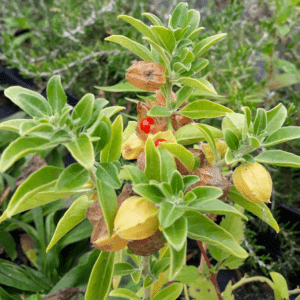 root of turmeric or cousin ginger, are two other plants of the same family with similar morphological benefits.
root of turmeric or cousin ginger, are two other plants of the same family with similar morphological benefits.
The ND Sciences Group has been using each of them for temporary use treatment, not for regular use treatment.
The use of the best ashwagandha in Ayurvedic medicine extends back over 3000 to 4000 years to the teachings of an esteemed rishi (sage), Punarvasu Atriya.
It has been described in the ancient principle sacred texts of Ayurveda, including the Charaka and Sushruta Samhitas.
Ashwagandha is also used as an “adaptogen” to help the body cope with daily stress, lower blood pressure and as a general tonic to improve immunity.
Many don’t realize that when certain plants are used together they can unlock a new level of effectiveness.
Oftentimes these ‘together’ effects can be unlocked through the use of other plants such as the best hot peppers, other peppers, and black pepper.
Withania somnifera has been a principal ingredient in many herbal remedies and green juices, throughout time.
Let’s check out the best ashwagandha we can order up today and get it into our system tomorrow!
ASHWAGANDHA RANKINGS
BEST ASHWAGANDAH BY NUTRITIONAL DIVERSITY
ASHWAGANDHA BENEFITS
Treats Alzheimer’s and other neurological conditions, effects of HIV. [1,a]
A maximum stress relief agent, [2,a] and even a sleep-inducing aid. [3]
Striking antioxidant properties are contained in the miracle herb. [4]
Like the best gotu kola, the herb acts in many ways as a brain cell protector, displaying anti-cancer actions and compounds have neuroprotective effects against glutamate insult, a potential that may serve as a great supplement for brain health. [5,a,b] Also as a strong general anti-anxiety and oxidative stress reducer [c]
Anti-cancer activity is a main study of the best ashwagandha herb, and has been known as a cancer medication for a long time. [6,a,b,c] Key essence known as Withanone.
Hello ladies, the abracadabra vowel arranged herb enhances sexual function, atop all these other things. [7] The shrub has enhancing effects on the reproductive system overall. [8]
Also like gotu kola, the best damiana and many medicinal shrubs of her type, ashwagandha can be helpful to insomnia and nonrestorative sleep (NRS) issues. [9]
The Ayurveda staple even helps regulate correct body weight. [10]
Important brain activity changes have been noticed and evaluated in a really interesting study whereas mice were dosed with Scopolamine, an alkaloid from the Datura flower I have a little experience with that of many things that cause amnesia. Withania somnifera, the hopefully memory restoration ingredient. [11]
The blessing is anti-aging, and anti-free radical. [12] She is packed with serious vitality enhancing substances and steroidal compounds have been extracted from her seeds. [13]
Cognitive functional improvements and reaction time improvements have been well known for the power herb. [14,15]
The superfood has been the focus of regenerative health possibilities is an ongoing track of study. [16]
Glutamate neurotoxicity a cause of some stroke, head trauma, multiple sclerosis, and neurodegenerative disorders has pointed a search for herbal remedies. [17]
In the traditional system of medicine in India, the magic herb has been used to treat rheumatoid arthritis. This could surely be helped further by the addition of turmeric. [18]
The magic plant is traditionally used in treating epilepsy, depression, arthritis, diabetes, and palliative effects such as analgesic, rejuvenating, regenerating, and growth-promoting effects. [19]
examine the possible effects of ashwagandha root extract consumption on muscle mass and strength in healthy young men engaged in resistance training.
A great 8-week, randomized and prospective, double-blind, placebo-controlled clinical study using 57 young male subjects 18–50 years of age, with basic experience in resistance training who were then randomized into magicherbtreatment (29) and placebo (28) testing groups.
Testers in the ‘treatment’ group consumed 300mg of withania root extract twice daily, while the control group ate starch placebos.
This study reported that ashwagandha supplementation is concretely associated with and supportive of significant increases in muscle mass and strength and concluded suggesting that ashwagandha supplementation may be a powerful add-in fop a resistance training program. [20]
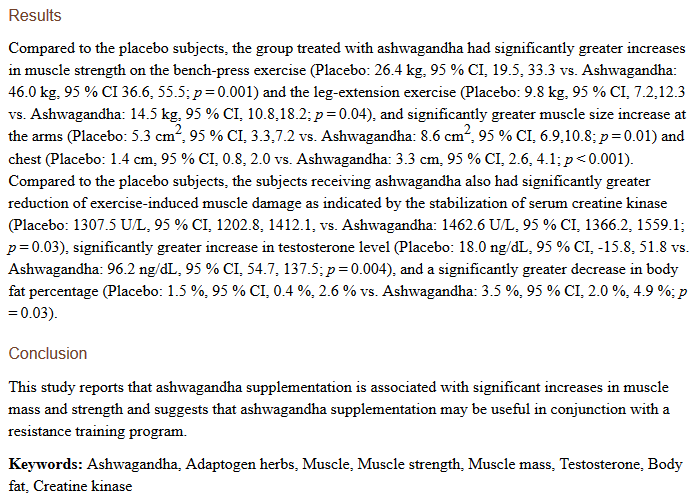
Overall vitality study finds in this 16-week, randomized, double-blind, placebo-controlled, crossover effects on fatigue, vigor, and steroid hormones middle-aged men, that 8 weeks of supplementation with an ashwagandha extract {Shoden beads, 600 mg daily delivering 21-mg withanolide glycoside} was indeed associated with significant improvements in salivary DHEA-S and testosterone production. [21]
An in-depth study on withania suggested her as a valuable natural drug for the treatment of cancers specifically carrying a p53Y220C mutation, which are the large majority of them. Using molecular docking tools and bioinformatics, they were able to test the herb against tumor suppressor p53 protein who is frequently mutated in a large majority of cancers. [22]
General wellbeing, sleep, and mental alertness during the day for elderly individuals is improved through the best ashwagandha supplementation of 600mg of extract per day. [23]
The herbs popularity also comes from the treatment of epilepsy, depression, arthritis, diabetes, and palliative effects such as analgesic, rejuvenating, regenerating, and growth-promoting effects. [24]
ASHWAGANDHA SIDE EFFECTS
Headache, sleepiness, and stomach upset have been reported in clinical studies when doses become very high. Remember to start slow with all things, rare allergic reactions are always possible.
Withania somnifera is regarded generally as very safe. [x,x]
ASHWAGANDHA EXPERIENCE
I use the shrub as much as possible, it grows at certain locations I visit it frequently. I am new to knowing her personally.
Ashwagandha ‘s History & Modern Use
Traditionally, ashwagandha has been given as a nerve tonic and adaptogen, which means as an agent to helps people adapt to various emotional and physical stressors.
It was classically used in India for nearly 5,000 years for conditions such weakness and debility in old age, hardships while young, constipation, insomnia, nervous conditions, stress, goiter, joint inflammation, parasites, hormone balance, and rheumatism – sort of a cure-all bring the overall system up herb. Good Nutritional Diversity diet plans want as many species with that feature as they can get in.
In old days a paste even made from the ashwagandha root, powdered then applied topically as a treatment to boils, cancers on the skin or gums, and other health threatening-looking tissue.
Ashwagandha is known to help people strengthen their immune systems after illness, chemotherapy, and surgery. It is a highly effective, evidence-based remedy to help reduce levels of stress and anxiety by lowering cortisol levels, and a plethora of other ways, to reach the end goal.
The scientist is quick to point out the presence of triterpene lactones, withanolides, withaferin A, alkaloids, steroidal lactones, tropine, and cuscohygrine, and other relatively powerful and recognized plant essences and chemicals realized form the laboratory dissection of the plant – something that in the pursuit of healing and performance anyway, is not necessary.
Alternative Use of Ashwagandha
Now people have matched the magic herb to a stack of conditions such as arthritis, anxiety, bipolar disorder, attention deficit hyperactivity disorder (ADHD), balance, obsessive-compulsive disorder (OCD), trouble sleeping (insomnia), tumors, tuberculosis, asthma, a skin condition marked by white patchiness (leukoderma), bronchitis, backache, fibromyalgia, menstrual problems, hiccups, tumors, tuberculosis, asthma, a skin condition marked by white patchiness (leukoderma), Parkinson’s disease, and chronic liver disease. It is also used to reduce the side effects of medications used to treat cancer and schizophrenia.
Like ginger, ashwagandha is said to reduce fat and sugar levels in the blood. A very similar list seems addressed by another shrub the same size; Ambrosia.
The soft two and a half foot shrub sometimes with small berry, is easy to grow in pots, and around the permaculture farm in sunny to partial, in dry stony earth. It has fury leaves and green parts and grows the orange to red fruit inside of a case that looks like the roof of the Kremlin, made from linen.
ASHWAGANDHA DISCUSSION
We ranked the best ashwagandha Withania somnifera, supplements to asses real source quality, refer the potent medicinal herb to clients as an alternative to other substances and to further our studies of plants and plant nutritional effects across I wider range of experiment and examination.
We looked hard at the warm looking herb whose fruits come in Kremlin-like domes that really help aerate and nutrify soil mixes, and we took time to consider what factors were important, and what factors were not while selecting the best Withania somnifera, herb source.
This is done by our company because we think one day the referrals could help us to provide this cutting edge information and because we need to find out and refer only the best product to our group of readers.
The Withania somnifera, is very applicable to the ND food combinations and ratios we have been working on in the last few years. She fits right in. We mark her high, on the demand list for our clients, permaculturists, athletes and general followers.
This is one of the ones we have spent a lot of time on.
Third-party testing of the substances available was required for ranking in this particular recommendation.
At least one hundred positive user statements are materials were the second requirement we had in this eval.
Anytime there is a good combination herb or benefits for any given substance we are sure to make mention of that. In this case turmeric for arthritis maybe jackfruit too, and damiana and or mango for energy and sexual performance and function restoration, gotu kola or dormilona (which acts more as a stimulant for me personally) for sleep and insomnia, and papaya for high-octane digestive capabilities and ginger for blood management. Black pepper, hot pepper, salt, oils and avocado can always improve uptake.
ASHWAGANDHA FAQ
Q: What is the best ashwagandha combination ND research is aware of?
A: The best damiana. The combination can be too much for some. Go slow. Haste makes waste.
Q. Can ashwagandha help me lose weight?
A. It can. If your body reacts to stress by gaining weight either through metabolic changes or through changes in appetite, the best ashwagandha can help immensely by helping to decrease stress.
Q: Does ashwagandha conflict with other herbs?
A: Surely to some degree of conflict there are a few out there, but in contrast thinking towards diversity and that natural lesson, the combinations we have found are the real focal point for this diva.
Q: Why the singing references?
A: Everybody is singing something no? I prefer honest songs. That is guaranteed in the plant world, and “if you grow them then you can know them.” They are always up for that, and they are always honest what more can you want?
Q: Is ashwagandha a topical herb?
A: One way to find out. Try it. To really get anywhere with nutrition one must remain forever experimental. Safe and logical but not totally in fear – this will get you nowhere. Fear is the Black Hole. Remember that. We will get back to you on this.
Q. What plant family is ashwagandha a member of?
A. Ashwagandha is a plant in the Solanaceae or nightshade family.
Q. What form of ashwagandha plant is it?
A. This ashwagandha plant is a short, tender perennial shrub attaining a height of 35–75 cm (14–30 in).
Q. What well known medicinal properties do ashwagandha possess?
A. The plant, particularly its root powder, has been used for centuries in traditional Indian medicine.
Q. How does ashwagandha look?
A. The ashwagandha plant has hairy branches extending radially from a central stem. Leaves are dull green, elliptic, size of which is up to 10–12 cm (4 to 5 in) long. The bell-shaped flowers are small and greenish. The fruit is orange-red.
Q. When does the ashwagandha plant mature and ready to be harvested?
A. Ashwagandha is ready to harvest in 5 to 6 months when flowers and berries start to form and leaves begin to desiccate.
Q. What kind of substance do ashwagandha also contain?
A. Ashwagandha contains withanolides, withaferin A, alkaloids, steroidal lactones, tropine, and cuscohygrine. Notably, withanolides are structurally similar to the ginsenosides of the ginseng family.
Q. What conditions are favorable for ashwagandha plants?
A. Ashwagandha is a drought-tolerant plant and grows in dry soil, once put down. Ashwagandha grows best when the temperature ranges between 70 F – 95 F (20 – 35 C).
Q. How does ashwagandha fame come about?
A. Ashwagandha is an important herb in Ayurveda, which is a form of alternative medicine based on Indian principles of natural healing.
Q. Does ashwagandha support heart health?
A. Ashwagandha has been shown to induce cholesterol- and triglyceride-lowering actions. This in turn will work for your heart, reducing cholesterol and lowering blood pressure altogether.
Q. What can ashwagandha do about the inflammation?
A. Various studies have been conducted and evidence has been pointing to that ashwagandha helps decrease inflammation by increasing the activity of natural killer cells.
Q. What other good benefits does ashwagandha give to bodies?
A. In studies, it has been shown that ashwagandha had boosted greater gains in muscle strength and size, while reducing in body fat percentage when compared with the placebo group.
Q. Does ashwagandha impact positively on male fertility?
A. It has been reported that ashwagandha increases testosterone levels and largely enhances sperm quality and fertility in men.
Q. Does ashwagandha possess calming effects?
A. Ashwagandha has been demonstrated to fight stress and anxiety in animal and human studies.
Q. Are there precautions for ashwagandha use?
A. Ashwagandha is a generally safe supplement for most people. Since its long-term effects are unknown, pregnant and breastfeeding women are advised to steer clear of its use. Autoimmune-deficient individuals, such as those who suffer from conditions like rheumatoid arthritis, lupus, Hashimoto’s thyroiditis, and type 1 diabetes should also consult with doctors before using it. It also has the effect of decreasing blood sugar and blood pressure levels, so medication dosages may need to be regulated if one takes it.
Q. What is the dosage suggested for taking ashwagandha supplement?
A. The common root extract is usually taken in 450–500-mg capsules once or twice daily.
ASHWAGANDHA RECAP
The best Ashwagandha is brain food and brain protectant.
She another anti-cancer wonder plant, and helps with overall female reproductive systems.
The magic herb may help arthritis. Use with turmeric.
She takes care of some stress too and can sing a song for insomniacs. Stabilize mood and anxiety.
This adaptogen helps people immensely with harsh, extreme, and difficult changes.
Throw some leaves from the magic herb and berry wonder in your water pitcher.
Great all-natural science-backed boost for muscle strength and recovery, as well as mass building.
Just give me the best ranked.
ASHWAGANDHA RELATED MATERIAL
Additional References,
- Deocaris CC, Widodo N, Wadhwa R, Kaul SC. Merger of Ayurveda and tissue culture-based functional genomics: inspirations from systems biology. J Transl Med. 2008;6:14
- Wermuth CG. Multitargeted drugs: the end of the “one-target-one-disease” philosophy? Drug Discov Today. 2004;9:826–827. doi: 10.1016/S1359-6446(04)03213-1.
- Patwardhan B, Warude D, Pushpangadan P, Bhatt N. Ayurveda and traditional Chinese medicine: a comparative overview. Evid Based Complement Alternat Med. 2005;2:465–473. doi: 10.1093/ecam/neh140
Originally Published Oct 19, 2019, Updated April 4 2013, Apr 4, 2020
Special Elements
Best Hot Peppers, The Many Benefits, Rankings, Side Effects & Experience
𝕻icante, or spicy hot peppers are not as popular here in South America, as they are in my hometown of Albuquerque, New Mexico,

Albuquerque Hot Air Balloon Fiesta, State Flag Balloon
which is also the hometown of the #1 International Fiery Foods Festival and also the more famous International Hot Air Balloon Fiesta.
Hot peppers have been used, cultivated, and cherished since man existed. Mostly for a good purpose, sometimes for bad.
Right away with athletic performance clients, I make sure a fiery food practice is employed. If you want a strong system overall, and you are asking me, you want to start training or progress as significantly as possible in your ability to eat the best hot peppers.
Once you have the skill it’s one you won’t want to lose. They say once you can’t take it anymore it’s hopeless you are without the spice and that’s not good.
The best hot peppers are superfoods. If you are one of the ones that thought you couldn’t but want to get back into it just go slow and keep tomatoes and tomato-based sauces out of it in the beginning. The best olive oil helps.
The love of hot peppers, and the health benefits that have been realized and enjoyed strongly dispel the notions that, if it tastes good it is best for you, or that taste is an object of edibility.
Hot peppers, especially those containing capsaicin, can offer a wide range of performance, health, and toughness benefits when included in a diet. Here’s a breakdown:
Performance Benefits
- Improved Circulation: Capsaicin dilates blood vessels, enhancing circulation and oxygen delivery to muscles during physical activity.
Metabolic Boost: Eating hot peppers can increase metabolic rate, helping with fat burning and energy production.
Endurance Support: The adrenaline rush from spicy foods can enhance focus and stamina, potentially improving athletic endurance.
Pain Tolerance: Regular exposure to capsaicin may increase your pain threshold, which can be helpful in pushing through tough workouts.
Health Benefits
Anti-Inflammatory Properties: Capsaicin has anti-inflammatory effects, helping reduce chronic inflammation, which is linked to conditions like arthritis and heart disease.
Enhanced Immunity: The high vitamin C content in peppers supports the immune system, aiding in quicker recovery from illnesses or strenuous activity.
Heart Health: Capsaicin can lower LDL cholesterol levels, reduce blood pressure, and improve overall heart health.
Digestive Health: In moderate amounts, peppers stimulate the digestive system, improving gut motility and possibly enhancing microbiome diversity.
Pain Relief: Capsaicin can desensitize nerve endings, which is why it’s often used in topical pain relief creams. Internally, this can help alleviate mild discomfort and reduce chronic pain perception.
Anti-Cancer Potential: Studies suggest that capsaicin can help slow the growth of certain cancer cells by promoting apoptosis (programmed cell death).
Toughness Benefits
Mental Toughness: Eating hot peppers regularly can train your brain to handle discomfort better, increasing resilience in challenging situations.
Endorphin Release: The initial heat from peppers stimulates the release of endorphins, the body’s natural painkillers, creating a sense of euphoria and promoting mental toughness.
Adaptation to Stress: Capsaicin activates the same stress responses as physical exercise, helping the body adapt to and recover from stress more efficiently.
Cold Resistance: Regular consumption of spicy foods has been associated with increased thermogenesis, helping you tolerate colder environments more effectively.
Other Benefits
Weight Management: The appetite-suppressing effects of capsaicin can help with calorie control, aiding in fat loss or maintenance of a lean physique.
Antioxidant Protection: Hot peppers are rich in antioxidants like beta-carotene and flavonoids, which protect against oxidative stress and support overall health.
Including hot peppers in your diet in moderation can help you tap into these benefits, making them a potent addition to a health-conscious or high-performance lifestyle.
ABSTRACT
In the garden I have grown some habanero relative peppers, the Mayan relative pepper, a little round ‘tabasco’ pepper, and a few jalapenos in the mountains, which speak for the general idea in local peppers. There are many species of best hot peppers that do well here, and really most hot peppers can do well anywhere they are fed and attended to well.
The most well-known hot variety, although not so hot here anymore, are listed as ‘Mayan’ peppers, and they are larger peppers and look like the ‘Red and Green Chile’ in New Mexico that hangs on ‘ristras.’
New Mexicans have been eating these (our local version of that can be very hot) chili peppers that grow there for thousands of years. New Mexicans I know will tell you our pepper is from there in New Mexico brought directly from God and is the super, superfood of them all, and you will read in a moment how they really are!
The main idea in the migratory plant study is that the Mayan pepper is from the traditional Aji, and from that different cultivars evolved.
Concretely, in contrast, there is really nothing to assure that this idea is true, or that the idea of New Mexico’s Hatch Green Chili is a completely different insert ofa completely different pepper either.
Some have theorized that Hatch Green Chili peppers, the best hot pepper could be behind Albuquerque dominating the UFC.
Ideas of hot foods making hot heads in history are all theoretical. Mostly the thought was spicy food love started during specific cultures that practiced developing intentional pain tolerance.
Recently, phytoliths of garlic mustard seed (Alliaria petiolata) were found in carbonized food deposits on prehistoric pottery from the western Baltic dating from 6,1 k.a to 5,7 k.a cal BP (Ertebölle Complex).
This archaeological evidence suggests much greater antiquity to the spicing of foods than previously thought within a hunter-gatherer or ancient premise.
Garlic mustard a.k.a. Hedge garlic alliaria petiolata is an inconspicuous plant, found in clumps in the lighter forest, which belongs to the Brassicaceae family of plants. It is native to Europe, Western and Central Asia, and Northwestern Africa. The leaves, flowers, and fruit are of the species are all edible.
The fruit of plants from the genus Capsicum, members of the nightshade family, Solanaceae. The name comes from the Aztec language, Nahuati.
Lunch was good!
On our own we know that eating spicy foods activates en expulsion of mucus from the system, namely in the sinuses.
This is important cleaning, and many health theories such as Arnold Ehret, a Godfather to vegetable healing have been logically formed around mucus-lessness as the real code to staying healthy.
No pain no gain can be employed here, and one can do their own experiment with that. Eat a large number of strong peppers, and on the other side of the hurt, one will find that their system is clear.
Electrophysiological records in both peripheral and central nervous systems show that the primate sensory taste system is basically organized around two major clusters of fibers and their cortical projections.
Co-variations between the neural responses to various compounds were observed for sugars, on the one hand, and for tannic acids and alkaloids. Our human taste perception system is not essentially different from that of the other primates as far as the dichotomy allowing discrimination of noxious v.s. beneficial substances through taste; clearly in the case of hot peppers not so much, nor maybe in garlic, black pepper ginger or turmeric.
Interestingly we know that two of these hard-tasting miracles, turmeric, and black pepper, are more active together and this could be similar in hot peppers.
An increasing amount of evidence shows that animals such as insects, birds, and primates use plant parts with certain categorical compounds known as ‘secondary compounds’ to improve their comfort or their health.
The concept of self-medication now generally accepted in primates but also in other vertebrates was first proposed by D.H Janzen (1978), an ecologist at the University of Pennsylvania.
Liken to the spice, bitterness is normally suggested to represent a reliable signal of toxicity for animals and humans but a number of secondary compounds are bitter tasting (Saponins, Alkaloids, and some Sesquiterpenoids, Terpenoids and Steroid Glycosides) and many of these substances possess important pharmacological activity.
Garlic mustard produces a variety of helpful secondary compounds including flavonoids, defense proteins, glycosides,
Nutritionally Diverse, Spicy Lunch
glucosinolates, particularly Sinigrin, a breakdown product allyl- isothiocyanate (AITC) that reduce its palatability to herbivores.
The chili plant seed is broken down by humans and primates whose taste receptors are burned, but the bird’s digestive tract does not break down the seed nor does the bird spit it out, from any taste reaction because it does not have the primal dichotomy of dissemination as an obstruction to his interest in the seed.
The plant should be well propagated by the bird gardener members of a miraculous human-inspired permaculture somewhere.
Popular Science and many others have had a very difficult time deciphering the love of chili eating, but well recognized that many do love it, and to them, it’s a deep passion. Chili is still the word for the plant pepper as it was for the Mayans and the Aztecs who may have been the one who gave it that name.
“Acceptance of food depends not only on taste, but also on olfactory, tactile and visual signals, as well as memories of previous, similar experiences and social expectations. Food palatability and hedonic value therefore play central roles in nutrient intake. As a result, ancestral humans who liked spicy food—and therefore gained from its health benefits—might well have had longer, healthier lives and more offspring” (Nilius & Giovanni 2011)
Paul Sherman, a professor of neurobiology and behavior at Cornell University in Ithaca, New York has research that shows people in warmer regions of the world benefiting from eating spicier foods, because of the fiery peppers are natural antimicrobials.
Food-born pathogens and parasites are more populated in warmer climates, and spices can kill or inhibit their growth.
The spicy research presented in National Geographic (2005) sited that in the same region of Thailand one culture who eats blander foods, ( less spicy) does experience more diarrhea and infections.
Paul went on to find out that hotter cultures ate the hotter foods, and colder ones ate less spicey foods, interestingly the germ stopper is less popular where it is not needed, such as in cold climate places.
Albuquerque, nestled into the foothills of the Rocky Mountains, must be the exception.
Here are the rankings for the best hot peppers, you can order to your door.
HOT PEPPER RANKINGS
Heat Ranking
As of January 2025, here is a list of the top 20 hottest peppers in the world, heat ranked by their Scoville Heat Units (SHU):
Pepper X: 2,693,000 SHU
Developed by Ed Currie, Pepper X holds the Guinness World Record as the world’s hottest chili pepper since 2023.
Wikipedia
Carolina Reaper: 2,200,000 SHU
Created by Ed Currie, the Carolina Reaper was the previous record holder for the world’s hottest pepper.
Wikipedia
Dragon’s Breath: 2,480,000 SHU (unofficial)
Developed in the United Kingdom, Dragon’s Breath has an unofficial SHU of 2,480,000.
Wikipedia
Trinidad Moruga Scorpion: 2,009,231 SHU
Originating from Trinidad and Tobago, this pepper was once recognized as the world’s hottest.
Wikipedia
7 Pot Douglah: 1,853,936 SHU
Also known as Chocolate 7 Pot, this pepper is native to Trinidad and Tobago.
Pepper Johnny
Komodo Dragon: 1,400,000 SHU
Developed in the United Kingdom, the Komodo Dragon chili is known for its delayed heat.
Rockadoodledo
Naga Viper: 1,382,118 SHU
A hybrid chili pepper created in the UK by crossing three of the world’s hottest peppers.
Rockadoodledo
Ghost Pepper (Bhut Jolokia): 1,041,427 SHU
Originating from India, the Ghost Pepper was once the world’s hottest chili.
Rockadoodledo
7 Pot Barrackpore: 1,000,000 SHU
Part of the 7 Pot family, this pepper is known for its extreme heat.
Rockadoodledo
Infinity Chili: 1,176,182 SHU
Developed in the UK, the Infinity Chili briefly held the title of the world’s hottest pepper in 2011.
Rockadoodledo
7 Pot Brain Strain: 1,350,000 SHU
Known for its brain-like appearance, this pepper is a variety of the 7 Pot chili.
Rockadoodledo
Dorset Naga: 1,000,000 SHU
A variant of the Naga Morich pepper, developed in Dorset, England.
Rockadoodledo
Trinidad Scorpion Butch T: 1,463,700 SHU
Once the world’s hottest pepper in 2011, developed in Australia.
Wikipedia
7 Pot Primo: 1,473,480 SHU
Known for its long, skinny tail, this pepper was created by horticulturist Troy Primeaux.
Pepperhead
Chocolate Bhutlah: ~2,000,000 SHU
A cross between the Ghost Pepper and the 7 Pot Douglah, known for its intense heat.
Grow Hot Peppers
Red Savina Habanero: 350,000–577,000 SHU
Once recognized as the hottest chili pepper in the world from 1994 to 2006.
Rockadoodledo
Fatalii: 125,000–325,000 SHU
Originating from Central and Southern Africa, known for its citrusy flavor and intense heat.
Rockadoodledo
Scotch Bonnet: 100,000–350,000 SHU
Native to the Caribbean, commonly used in jerk seasonings and hot sauces.
HomeDiningKitchen
Bird’s Eye Chili (Thai Chili Pepper): 50,000–100,000 SHU
Commonly used in Thai and Southeast Asian cooking, known for its intense heat.
HomeDiningKitchen
Cayenne Pepper: 30,000–50,000 SHU
A staple in many spice racks, often used to add heat to dishes like soups and stews.
HomeDiningKitchen
Please note that the Scoville Heat Units (SHU) can vary based on growing conditions and testing methods.
Nutrient Density Ranking
New Mexico green chiles are a nutrient-rich addition to your diet, offering notable amounts of vitamins and minerals. Here’s how they compare to other hot peppers in terms of nutritional density:
Nutritional Profile of New Mexico Green Chiles
Vitamin C: A ¼ cup (57g) serving provides approximately 36 mg of vitamin C, fulfilling about 40% of the recommended daily value.
Eat This Much
Vitamin A: The same serving offers around 60 µg of vitamin A, accounting for about 7% of the daily value.
Eat This Much
Iron: Contains approximately 0.4 mg per ¼ cup, contributing to about 4% of the daily value.
Eat This Much
Dietary Fiber: Provides about 1 g per serving, which is 4% of the daily value.
Eat This Much
Revised Ranking of Hot Peppers by Nutritional Density
Considering the nutritional content of New Mexico green chiles, here’s an updated ranking:
Red Bell Peppers: Extremely high in vitamin C (169% DV per 100g) and vitamin A.
New Mexico Green Chiles: High in vitamin C (40% DV per 57g) and a good source of vitamin A and iron.
Habanero Pepper: Rich in vitamin C, vitamin A, and potassium.
Jalapeño Pepper: Good source of vitamin C, vitamin B6, and antioxidants.
Cayenne Pepper: High in vitamin A, vitamin E, and vitamin C.
Serrano Pepper: Contains vitamin C, vitamin A, and capsaicin.
Tabasco Pepper: Rich in vitamin C, vitamin E, and calcium.
Trinidad Moruga Scorpion: High in capsaicin and contains vitamin C and beta-carotene.
Anaheim Pepper: Good source of vitamin C, vitamin A, and moderate capsaicin levels.
Poblano Pepper: Provides vitamin C, vitamin A, and iron.
Incorporating New Mexico green chiles into your meals can enhance flavor while boosting your intake of essential nutrients, particularly vitamins C and A.
HOT PEPPER BENEFITS
Studies showed that eating spicy foods was the factor behind a 14% decrease in overall mortality, compared to folks who can’t take the heat [2]. Capsicum has positive vascular and metabolic effects, this makes it also very important to a Nutritional Diversity diet. [3] 💋
HOT PEPPER SIDE EFFECTS
Hot chili peppers can burn you, is several places, the worst one is the eyes or private areas. Make sure to wash your hands when handling the fire fruits. To some and depending on the current diet they can cause over-acidity.
HOT PEPPER EXPERIENCE
I am in the Caribbean right now, on an island in Panama known as Bocas del Toro, a great place for permaculture farming, where there are some famed hot sauces but it’s not necessarily somewhere I would send a firey food lover. Bocas sauce is hot, but not that hot, and it does have a mustard seed base. Barbados had some great hot stuff too.

There are a few hot sauces of weight here for sure and across Central and South America a few more. I have had some solid stuff, and there are surely some murderous hot peppers growing quite well here in the tropics, and proudly many types at our own small family farm.
HOT PEPPER DISCUSSION
Tough Guys Eat Spicy Food :
1932, the Soviet Union sent one of its best agents to China, a former schoolteacher and counter-espionage expert from Germany named Otto Braun.
His mission was to serve as a military adviser to the Chinese Communists, who were engaged in a desperate battle for survival against Chiang Kai-shek’s Nationalists.
The tale of Braun’s adventures in the Chinese Communist revolution is packed with enough twists and turns for a big-screen thriller. In the clutch of culinary history, one quote from Braun’s autobiography recalls his first impressions of Mao Zedong, the man who would soon go on to become China’s Emperor.
“The food of the true revolutionary is the red pepper,” declared Mao. “And he who cannot endure red peppers is also unable to fight.”
I love this story, and I believe the quote is accurate. I don’t let the young men around me off easy for eating a bland plate of food, and I will have my own hot something with me, even if their household is unprepared, always. “Real Tough Guys Eat Spicy Food,” is one of the things they may hear me say.
I know, coming from Albuquerque New Mexico, where we love our Green Chili more than our … it’s a long-lasting positive relationship that never goes bad.
I thought for the longest time there would be no way I could ever live without the stuff. It really was that important to me, I am close to finding some imports or doing a dedicated climate control space to grow some of my own here but sadly at this time I miss her.
I am able to find a few good hot peppers here in Panama though.
Science now finds connections to neurological and hormonal endorphin releases in the hot peppers as well as other reactions that affect our happiness and our senses in life.
The NAUTILUS company published an article last year (Andrew Leonard 2016) entitled “Why Revolutionaries Love Spicy Food,” which explains basically that firey people like firey food, and that there is a link between the chili pepper and risk-taking.
Christopher Columbus on Jan. 1, 1493, recorded in his diary, his discovery of the chili pepper, on the Caribbean isla of Hispaniola,“the pepper which the local Indians used as spice is more abundant and more valuable than either black or melegueta pepper [an African spice from the ginger family].”
A Sichuanese folk saying goes: “Spicy peppers are the meat of poor guys.” Sichuan people an already hot eating people were the main group that adopted the chili pepper significantly when Columbus first imported it to Europe and Asia. Poor guys are usually tougher guys.
The chili pepper plant is a strong grower, easy to cultivate, productive crop. High in A, B, and C’s vitamin spread of nutrition, sure to keep the body and immune system tough and ready.
Shark’s Fin and Sichuan Pepper, y Fuchsia Dunlop, an author of Chinese cookbooks, says that the region’s passion for spice is explained by the intersection between climate and traditional Chinese medicine: “In terms of Chinese medicine, the body is an energetic system, in which damp and dry, cold and hot, yin and yang, must be balanced.”
In the mid-70’s a study of the pepper craze in Oaxaca, Senior Rozin of the University of Pennsylvania determined that the act of eating chili peppers is an acquired taste in Mexico.
Children do not come out of the womb craving a scorching hot cuisine. They’re encouraged, by their families, to handle the chili’s burn with small doses that gradually increase.
In describing the variance between heavy hitter hot mouths and the light roaster, Rozin came up with a theory he called “benign masochism.” A certain type of person, he theorized, was lured to the burn, the same kind of person, he suggested, who might be drawn to other “sensation-seeking” activities.
Surprising amounts of sources word the chili peppers effect by saying the chili gives a mild ‘high.’
During the Sino-Japanese War between 1937-1945, of the 1,052 generals and marshals who served in the early ranks of the People’s Liberation Army, a whopping 82 percent hailed from China’s four spiciest provinces is pointed out by an essay from Hongjie Wang, an associate professor of history at Armstrong State University in Georgia.
Wang specializes in Sichuan culture, and in his essay, “Hot Peppers, Sichuan Cuisine and the Revolutions in Modern China,” he writes of one contemporary Chinese cultural observer who called Sichuan’s inherent “potential for rebellion, so beautiful and marvelous.” In 1911, according to Wang, a protest against “imperialist” control of newly constructed railroads in Sichuan triggered national unrest that ultimately led to the fall of the Qing Dynasty.
One could make the case that Sichuanese hot tempers set in motion the entire process of China’s modern political development. Anecdotal in the language of Sichuan, Wang scribes, “eating spicy food has come to be regarded as an indication of such personal characteristics as courage, valor, and endurance, all essential for a potential revolutionary.”
In a cultural list of the spiciest food geography, the “Spicy Quest” came up with the following red zones:
- South Asia (India, Sri Lanka, Bangladesh, Polynesian SE Asia (Indonesia, Malaysia, Brunei),
- Buddhist SE Asia (Thailand, Laos, Burma, Vietnam),
- Himalayas (Bhutan, Nepal, Sikkim, Tibet?),
- China (Sichaun and Hunan provinces),
- Indigenous South America (Bolivia, Ecuador, Amazon),
- American Desert (US Southeast, New Mexico, Mexico),
- Korea Peninsula Sphere (Korean regions in China, Korea, and Russia, nearby Japanese and Chinese islands),
- East Mediterranean (Syria, Lebanon),
- Southern Africa (South Africa, Mozambique), Balkans, North Africa (Tunisia),
- West Africa (Guinea, Cameroon, Nigeria, Senegal, Liberia),
- and the Caribbean (Trinidad, Jamaica).
A hot food eater identity is reasonably a daring individual who may like pain. Personality types class in the risk-taking, nomads on the move who can carry a cheap and easy-to-grow option for adding flavor to a constrained diet. Or they are from a hot and humid climate, where microorganisms grow, or strongly favoring a yin and yang medical philosophy.
can carry a cheap and easy-to-grow option for adding flavor to a constrained diet. Or they are from a hot and humid climate, where microorganisms grow, or strongly favoring a yin and yang medical philosophy.
The reasoning I like the best is those that believe the hot pepper is a source of courage and energy and makes them tough.
Certain indications point to fiery citrus combinations as being powerful pre-workout employs. This is not an advised combination for those building their tolerance to spicy food, but for advanced practitioners.
I can testify to you that real tough guys eat spicy food, that chili peppers are muscle food, and healthy food and that my people have bee eating and growing this food right where I was born and raised, under the red skies. 100% 505, (Hatch) is something I am very proud of, and what every Albuquerque born stud can tell you, is we love our Green Chili – and we love it so much that we will fight about it. 😀
A Spicy Chocolate Food of the Gods
The Food of the Gods, of the Mayan and Azteca cultures; referring to their invented substances are usually ingested as a drink, chocolate was a mix that at that time called XOCOLATL: (SHOW-CO-LA-TIL) included hot peppers, a type we ave called for a long time now, “chili peppers.”
Spicy Food is For Tough Girls Too!
Holly Holm is shining athletic star that surely eats hot peppers and fiery food every day, and has dominated the Ultimate Fighting Championship women’s divisions, for years now after obtaining about every boxing belt she possibly could have before making the MMA switch at age 30.I figure if you eat enough hot peppers you can almost kind of be like her; from Albuquerque (cause that is the real secret).
In a video of the pop song “La Mei zi” by Hunanese singer Song Zuying, who lives in a firey foods culture in Asia, is seen surrounded in scores of young, red-clad Chinese women frolicking amid a harvest of heaps of chili peppers, as Song Zuying sings:
As children, spiciness is not the spicy girls’ fear
As adults, spicy girls don’t fear the heat
Getting married, spicy girls fear that things might not be spicy enough.
In everything I do since her birth, I keep my daughter in mind, and so now that she follows the site regularly and I hope the diet too, she can start eating spicy foods, cause I know the people of her geographic region- and they are nowhere near as tough as Duke City people not even close, and I know they don’t have much hot stuff going on either, so she will have to go search out hot peppers.
Simply Go Spicy: Eat the hottest things you find on everything you eat, and you’ll be tougher all the way through those who do not. Life is just one big fight, what kind of champion, what kind of character, are you going to build? Yes, I already know and you do to: A Hot One!
HOT PEPPER FAQ
Q. Where is the traditional U.S. hot pepper native to?
A. The origin of this hot pepper has been traced to Mexico.
Q. What form does the traditional U.S. hot pepper plant grow to?
A. Hot pepper is a plant that grows on average between 3-4 feet in height.
Q. Which plant family hot pepper belongs to?
A. Hot pepper is a member of the 30 species of flowering plants in the nightshade family.
Q. What temperature range is best for hot pepper growth?
A. Hot pepper thrives well somewhere between 60°F/16°C and 90°F/32 °C.
Q. How does the hot pepper plant look?
A. Hot pepper bears white flowers and matures by forming fruits of different colors.
Q. When does the hot pepper plant blossom?
A. The white flowers typically only last several days. Hot pepper flower self pollinates and upon successful pollination, it would bear fruits.
Q. Where is the name hot chili pepper coming from?
A. it originates from Nahuatl chīlli
Q. What varieties of uses exist for hot peppers?
A. Chili pepper can be consumed raw, cooked, dried, or added as the primary ingredient in powders and sauces.
Q. What are some known medical uses for this hot pepper plant?
A. Hot pepper relieves nose congestion, lowers blood pressure, relieves natural pain, boosts immune functions, and induces red blood cell count.
Q. What gives chili pepper its spicy properties?
A. The chemical that endows this fruit is called capsaicin.
Q. How long does hot pepper take to mature?
A. Many varieties of chili peppers take 75 days or more to mature.
Q. How to grow hot pepper?
A. The best way is to transplant once seeds germinate in 2 weeks and move to the outside soil. Hot pepper likes plenty of sun and well-drained soil is a prerequisite.
Q. What are natural pests associated with this hot pepper plant?
A. Hot pepper is susceptible to cutworms, aphids, beetles, whiteflies, fungus.
Q. What is the seasonal behavior of hot pepper?
A. Most species of hot pepper last for one season only.
Q. What is the production amount of hot pepper worldwide?
A. Worldwide figure from 2014 recorded 32.3 million tons of green chili peppers and 3.8 million tons of dried chili peppers were produced.
Q. When is the earliest evidence that chili peppers were consumed and used by humans?
A. Chili peppers have entered the human diet in the Americas since at least 7500 BC.
Q. What other nutrients does hot pepper contain?
A. Red chili peppers contain large amounts of vitamin C, while other species contain copious amounts of vitamin A beta-carotene.
Q. Which part of the hot pepper plant contains the spiciest fruits?
A. The part of the chili pepper plant closest to the stem is usually the spiciest part for it has the highest concentration of capsaicin.
Q. Which countries produce the most amount of chili peppers?
A. Top producers rank as follows: China, Mexico.
Q. What other novel use of the chemical extracted from chili pepper?
A. Capsaicin extracted is used to fabricate pepper spray and tear gas as chemical irritants, deployed in self-defense and crowd control.
HOT PEPPER RECAP
Hot peppers are regular parts of our diets here, and we believe they make you strong.
They are some of the filthy few at the grocery store though because usually farmers use a lot of chemicals to grow them – grow your own.
Just give me the best hot pepper, please!
RELATED MATERIALS
Published Feb 21, 2018, Updated Sep 16, 2019, Feb 9 2020, Oct 22, 2022
-

 Agriculture2 years ago
Agriculture2 years agoWhy Small Alternative Tropical Agriculture is the Best Investment Today
-

 Special Elements6 years ago
Special Elements6 years agoBest Garlic Vine Rankings, Benefits, Side Effects & Experience
-

 Special Elements3 years ago
Special Elements3 years agoBest Pre-Workout Supplement Rankings, Benefits, Side Effects & Experience
-

 Special Elements3 years ago
Special Elements3 years agoBest Cassava Manioc, Rankings, Benefits, Cancer Cure & Experience
-

 Special Elements3 years ago
Special Elements3 years agoBest Glutamine Rankings, Benefits, Side Effects & Experience
-

 Special Elements5 years ago
Special Elements5 years agoBest Ambrosia, Wormwood Rankings, Benefits, Side Effects & Experience
-

 Special Elements6 years ago
Special Elements6 years agoBest Culantro Rankings, Benefits, Side Effects & Experience
-
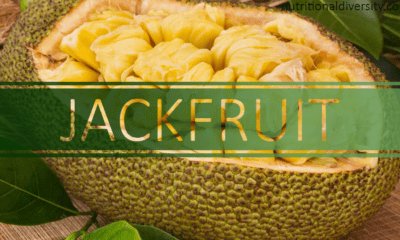
 Special Elements5 years ago
Special Elements5 years agoBest Jackfruit Rankings, Benefits, Side Effects & Experience



